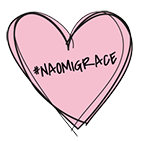Be Safer in Open Water
The Basics
All water is inherently dangerous.
Open water and natural bodies of water (oceans, lakes, rivers, ponds, etc.) can present hazards such as lack of clarity and currents: Drowning Risks in Natural Water Settings. (CDC)
Swim near a lifeguard when possible.
Never swim alone.
Swim with an adult buddy.
Ask someone to be your kayak, canoe, or stand-up paddleboard Water Watcher.
Obey posted rules and warning flags: Flag Warning System. (Galveston Island Beach Patrol)
Learn how to recognize a rip current, and how to safely get out of a rip current. Teach this information to your kids.
Rip Current Survival Guide (USLA)
Rip Current Safety (National Weather Service)
When in or around open water or natural bodies of water, children under the age of 14, and all weak or non-swimmers should wear U.S. Coast Guard-approved life jackets.
Rafts, inner tubes, water wings, floaties, and other inflatable items are NOT proper safety devices.
BROCHURE: Open Water Resource – English (Zoe Lynch)
BROCHURE: Información de seguridad en aguas abiertas (Zoe Lynch)
VIDEO: What drowning looks like. (Oasis Pools)
VIDEO: INVESTIGATORS: Drowning is silent. (My Fox9)
VIDEO: Instinctive Drowning Response. (Mario Vittone, CBSN)
VIDEO: Reach or Throw, Don’t Go. (WIVB TV, YouTube)
Action Items
Before you head to the beach or lake, find out which locations have life guards and plan to swim there.
Learn how to recognize a swimmer in trouble (see videos above).
Take a Basic Water Rescue or Home Pool Essentials class. The American Red Cross offers these courses.
Watch and share Never Happens: True Stories about Water Safety – TPWD with your teenage children.
Remember the 4 R’s: Recognize, respond, rescue, revive (ONENews, TVNZ)
Learn about rip currents and remember to pack flotation devices (Bring A Noodle)
Read all the Layers of Protection.
Take and share the Naomi’s Grace Water Safety Quiz.
Dive Deeper
Read more about International Standards for Beach Safety and Warning Flags. (ILS)
Visit the United States Lifesaving Association (USLA) for educational beach safety resources.
Visit the International Surf Lifesaving Association (ISLA) to learn how current (and future) lifeguards are helping coastal communities in need across the globe.
Learn about Washington State’s open water drowning prevention strategies. (Washington State Department of Health)


